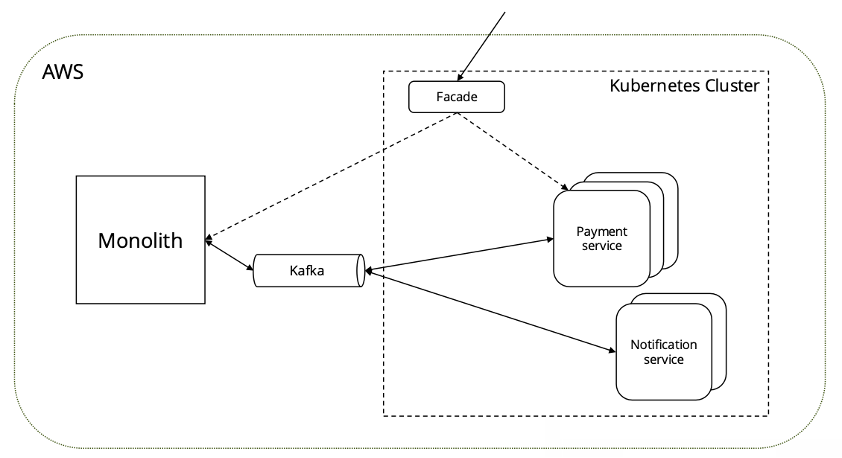186,000 Tons less CO2 thanks to AURENA Users
A recent study by WU Vienna demonstrates the enormous CO2-saving potential that lies in the reuse of pre-owned products.
24.03.2025
written by Christian Prohinig
At AURENA Tech, our journey to microservices was driven by necessity, not trend. I recently had the opportunity to share our experience during the Lakeside Talks Meetup series, which highlighted the practical lessons we learned along the way. While our monolithic architecture worked well in the early stages, its limitations became clear as we scaled. These included inefficiencies in scaling individual components, increased deployment risks due to tightly coupled modules, and delays in adapting to new business needs. In this post, we’ll share why we decided to transition, the challenges we faced, and how to decide if microservices are the right choice for your use case.

Picture generated by ChatGPT
Our monolithic architecture faced challenges as we grew. Scalability bottlenecks arose because components could only scale together, even if only one needed it. As an example, an overloaded notification module would require the whole system to scale, resulting in many idling components and wasted resources. Deployments became risky, as changes to one module had the risk of affecting others. Adding new features required significant rewrites and delayed our ability to adapt.

Simplified illustration of original architecture
Our plan is not to completely discard the monolith. Instead, we are reducing its size over time by extracting services where flexibility and scalability are most needed. This approach let us retain stability in parts of the system that work well, ensuring critical functionalities continue to operate reliably. By minimizing disruption to core processes during the transition, we are able to focus on incrementally modernizing high-impact areas without jeopardizing overall system performance.
Microservices aren’t always the best solution. If your team lacks experience or workforce, managing multiple services and APIs can become overwhelming. If your current architecture is stable and meets your needs, transitioning may be unnecessary. Additionally, systems requiring strong transactional consistency may struggle with the complexity of distributed systems.

Picture generated by ChatGPT
Our transition is gradual. We started with high-impact bottlenecks and new business requirements which could be implemented as dedicated services. To piece it all together, we introduced Kafka for resilient messaging. Kafka acts as a distributed message broker, enabling services to communicate asynchronously. It ensures no data is lost, even if a service is temporarily unavailable, and supports scalable, fault-tolerant communication across our system. Extracting modules one at a time allowed us to refine our approach while the monolith continued handling stable components.

Simplified illustration of original architecture
Microservices brought clear benefits. High-usage services now scale independently, development cycles are faster, and system resilience has improved by isolating failures to individual services. Meanwhile, the streamlined monolith manages stable components effectively and can be improved incrementally.
Ask yourself if scalability, deployment, or development bottlenecks are holding you back. Do you have the expertise to manage distributed systems involving dozens of components? For us at AURENA Tech, microservices were essential. For others, a well-tuned monolith may still be the better choice.